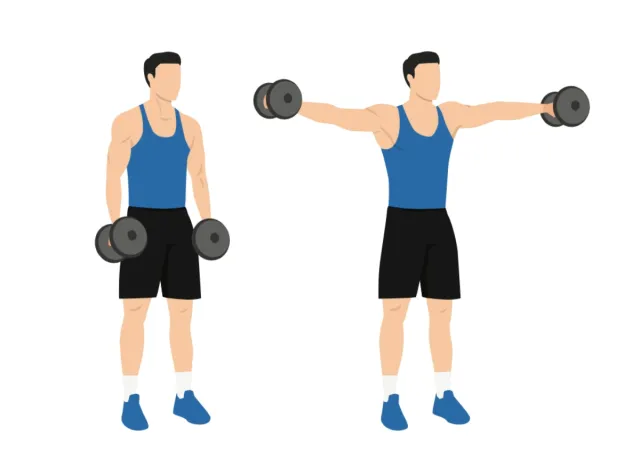I have started experiencing electric shocks when I touch my light switches, taps and radiator.
These even happen at night where, sometimes, I think it might be a heart attack. I am 83 with a pacemaker and COPD. Can you help me?
Sylvia Turner, Rowley Regis, Warley.
First, let me reassure you that the alarming electric shocks are nothing to do with your pacemaker or your heart.
What you are describing is static electricity, something taught in physics lessons and clearly demonstrated by that old party trick of rubbing the balloon on a sweater and then watching it stick to the wall, held there by static electricity.
It is caused by the imbalance of the electric charges on different surfaces — this is not the same as the electrical current that flows through wires, such as to a lightbulb, kettle, or even your pacemaker.
Static charge builds up when two surfaces come into contact and at least one has a high resistance to electric current, e.g. an insulator.
An insulator is a material where charged particles don’t flow freely, for instance rubber soles on shoes.


I have started experiencing electric shocks when I touch my light switches, taps and radiator, a pensioner tells DR MARTIN SCURR
A conductor, meanwhile, allows electricity to pass through it easily, for example a metal tap.
When the two materials separate, small particles called electrons gravitate to the conducting material (because this pulls them more strongly) or, when the materials are both insulators, whichever has the strongest affinity for negative charge.
This material becomes negatively charged, the other becomes positively charged, and you create static electricity.
For some reason you are building up a charge, probably created by your shoes, clothing or carpet (synthetic materials can make the problem worse because the molecules carry lots of loose electrons, which are negatively charged).
When you touch a conductor — e.g. your tap, radiator or light switch — you experience the discharge of the static build-up that you have been carrying. This is not dangerous, although it may be alarming.
Humidity in the atmosphere helps to prevent this, as moisture allows the free movement of electrons, so static is more likely to build up in a dry home (often from central heating).
Static electricity is also much less likely in the summer, when you can have all the windows open so the air is not so dry. Removing shoes could prevent the experience, too.
The other thing you can do is discharge any static you have built up on yourself.
Every now and then, touch a coin to a tap: the particles stuck to you will flow away through the metal coin, and there will be no shock.
I can reassure you that neither your pacemaker nor your heart could have caused this response.
Certain pacemakers are designed to cause a (considerable) shock to restart the heart to prevent a cardiac arrest; other types use only a small voltage to maintain a normal heartbeat, but this is too small for the patient to feel anything.
It seems very clear to me that the cause of your experience is static electricity.
In my 60s, I was running three miles once a week, but I started to suffer from severe inner-thigh cramp in both legs at night.
I’m now 74 and no longer run as I’ve found no solution. What could help me run again?
Alvar Swainston, via email
READ RELATED: Coronavirus: Five reasons why rise in cases is not all it seems
I am intrigued by your question. The muscle cramp you describe appears to be unusual because it’s so directly linked with your running.
Usually cramp has no immediately obvious cause, but it is a common experience — occurring at night in 40 per cent of those aged 50 and over, and in the daytime alone in about 7 per cent.
During a cramp, the muscles in the area shorten suddenly, causing pain and spasms that sometimes leave you briefly unable to control the muscle.
This is undoubtedly unpleasant, and even more so when it affects activities you enjoy — in your case running.
The benefits to your health from such an exercise programme are a strong incentive to try to prevent the problem.
Although most cramps have no known cause, they can be related to a physical problem such as flat feet (as the foot muscles tire more easily, causing cramp), joint hypermobility syndrome (it’s not clear why), and some neurological disorders, such as Parkinson’s disease (possibly because of the muscles themselves, or as a result of the brain signals being affected).
Metabolic disorders — such as diabetes, alcohol-related liver disease and thyroid conditions — are also associated with cramps.
Another cause is a deficiency in minerals that play a role in healthy muscle function, such as calcium, potassium, sodium and magnesium.
But there is nothing in your history to suggest any reason for the cramps, and I do not believe that your running regimen would cause enough dehydration — from sweating — to be a factor.
With the above causes excluded, the next question is what medications you are taking: diuretics, the non-steroidal anti-inflammatory naproxen, some drugs used in asthma (e.g. salmeterol) and statins, have all been found to trigger muscle cramps in some people.
If you’re taking any of these medications, I’d recommend talking to your GP to find an alternative drug where possible, as this may help stop the cramps and so enable you to start running again.
Although I am not aware of many medications that are proven to help, there is one over-the-counter product called Crampex, which is licensed to prevent nocturnal muscle cramps.
It contains calcium, vitamin D, and nicotinic acid, although it’s not clear how these help.
It might be worth a trial of these tablets — a subject to raise with your chemist.
IN MY VIEW: Is this the secret to warding off dementia?
Lack of sleep in middle-age is a risk factor for dementia, with recent research confirming that sleeping for six hours or less on a regular basis is linked to a 30 per cent greater chance of developing the condition.
So many of us feel we need more sleep and struggle to achieve this target, but there is some reassuring news: doing tai chi or other forms of simple exercise can improve your sleep quality.
In a trial published in the journal JAMA Network Open, people who practised tai chi or took exercise (in the form of brisk walking and resistance training) for an hour three times a week, experienced improvements in sleep quality compared with those who didn’t exercise.
It’s worth remembering that it takes many years of adult life to lapse into a poor sleep pattern, so it will take time to re-establish the sleep quality we enjoyed as teenagers.
But do persist!
Write to Dr Scurr
Write to Dr Scurr at Good Health, Daily Mail, 2 Derry Street, London W8 5TT or email [email protected] — include your contact details.
Dr Scurr cannot enter into personal correspondence. Replies should be taken in a general context and always consult your own GP with any health worries.
Source: Martin Scurr









